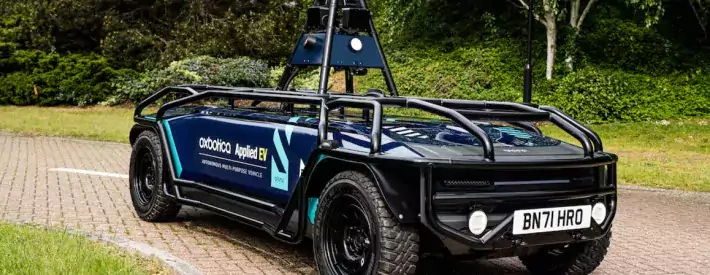When is a self-driving car, not a self-driving car

The government wants to make the UK a leader in self-driving technology, but it’s approach may be out of step with the automotive industry
In May, the government’s Centre for Connected and Autonomous Vehicles (CCAV) announced a new £40m funding competition to kick-start commercial self-driving services in the UK.
Minister for Investment, Lord Grimstone, said: “Self-driving vehicles have the potential to revolutionise people’s lives, whether it’s by helping to better connect people who rely on public transport with jobs, local shops, and vital services, or by making it easier for those who have mobility issues to order and access services conveniently.”
The launch press release went on to quote the now familiar statistics that self-driving could be worth £42 billion to the UK economy by 2035, and potentially create 38,000 new skilled jobs.
It also contained this eye-catching line: “The first vehicles to be listed as self-driving in the UK – vehicles approved under the Automated Lane Keeping System (ALKS) Regulation – could be available for people to purchase, lease or rent later this year.” Not everyone agrees with the approach or the timetable.
Matthew Avery, Director of Research at Thatcham, was quick to emphasise that there are currently no vehicles Type Approved for automated driving in the UK.
“We are signatories to the UN Type Approval mandate, so UK regulation will reflect the UN Type Approval requirements which come through Geneva,” he said. “Any vehicle that is Type Approved will also have to go through a GB approval process.
“It’s important to make sure, before a vehicle is added to the Secretary of State's self-driving list, that it has been approved to be usable in the UK – that it can follow UK road laws, read UK road signs etc. The exact wording is being worked-up at the moment.
“There are a number of issues we feel are missed within the current UN regulation: 1) the ability of the vehicle to change lanes; 2) the ability of the vehicle to find safe harbour; and 3) the need for the vehicle to record data in every collision.
“However, amendments have been tabled to tackle these issues, which are likely to be signed-off in September and come in from January 2023. These include the ability to change lanes and find safe harbour, and also extend the speed range up to 81mph. These are all very sensible and meaningful additions which will improve usability.”
The picture is changing fast, but insurers aren’t yet convinced that ALKS-equipped vehicles should be described as self-driving.
Doug Jenkins, Motor Technical Risk Manager at AXA Insurance UK, said: “The government have set out the position – they want the UK to lead in this – but I am concerned that it could become confusing for the public when really autonomous vehicles come to the market.”
Indeed. Compare the headline-making Oxbotica AppliedEV – which in May became the first zero-occupancy, fully self-driving, electric vehicle to operate on public roads anywhere in Europe – with the new Mercedes S Class, BMW i7 or Volvo XC 90 and you can see they’re very different beasts.
Interestingly, under the Scope section of the new funding competition, the government insists that Terminology in your application must comply with the meanings as per BSI Flex 1890 v4.0:2022-03: Connected and automated vehicles - Vocabulary.
Thanks to lead technical author Prof. Nick Reed, the recently updated BSI CAV Vocabulary features a handy new definition for self-driving: “Full function of the dynamic driving task (2.1.24), performed by the automated driving system (2.1.7) within its operational design domain (2.1.48)”.
Does ALKS meet the criteria? There are at least two big problems with the government’s current plan. First, as Jenkins alluded to, the conflation of assisted driving and self-driving risks drivers misunderstanding their car’s capabilities. That’s clearly dangerous.
Second, any approach which involves switching between a human driver and a highly automated car introduces the problematic moment of handover.
Dr Subhajit Basu, of The University of Leeds’ School of Law, has eloquently expressed the serious concerns shared by many experts.
“The main safety messages surround the extreme difficulty most drivers will encounter when an autonomous vehicle suddenly transfers the driving back to them,” he said. “Even if a driver responds quickly, they may not regain enough situational awareness to avoid an accident.”
So while the government is pushing to lead in self-driving technology, the first vehicles on the road may not be entirely autonomous. Not by everyone’s definition of the term anyway.




